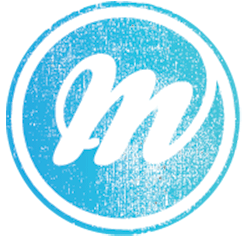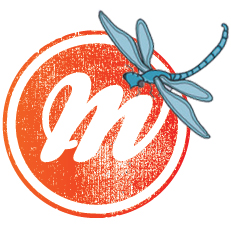Written by Lisa Lewis Miller
If you read my previous post on motivational mindsets and thought to yourself, "Yeah, letting myself get angry is definitely NOT my issue," then this article is for you.
Prior to becoming a career coach and getting my Pivot certification, I had a ten-year corporate communications career that I was damn good at. But I was completely frustrated with it, because it felt soul-less for me.
When various bosses would ask me to work on Thanksgiving day or jump right back into work after I learned my grandfather died, I could feel a rage blackout coming on. Something inside of me said, "There has got to be a better way."
I felt frustrated that I wasn't bringing my full self to work and letting that anger seep over into the rest of my life, but I hadn't yet given myself permission to truly explore what a change might look like. Because I was so busy being mad at myself for not having my perfectly crafted career plan executed with flawless perfection, I was spinning in anxious circles of frustration rather than moving forward.
Through the disappointment of not getting it right the first time, I had painted myself into a corner where I couldn't win: I was a failure for being in a job that didn't fit me, and I was a failure for considering a change.
And while I knew I was desperate for forward progress, I wouldn't let myself step into the role of the hero in my own career because I wasn't done beating myself up for what felt like "failing" in my current path.
In order to move forward, the self-abuse had to stop.
I needed to forgive myself for being human — and for not being a robot who could keep doing the same tasks forever without wanting a change.
I needed to apologize to myself for creating an expectation that I couldn't or shouldn't make a career shift. No matter how much it cost, the price of my education and the time I'd invested in the field wasn't worth sacrificing happiness and fulfillment for the next 40 years of my career.
More than anything, I needed a set of empowering, loving beliefs that would let me take action and move forward, even if I kept making mistakes and getting things wrong.
If you're experiencing an inner conflict of your own where anger or frustration is holding you back, this exercise will remind you that while you're never going to get it 100% right, not letting yourself take a chance is 100% wrong.
Write yourself a permission slip.
Remember when you needed a parent's signature to go on adventures in grade school? You may feel like you need permission to explore change in your life and career as well.
However, in a stark contrast to when you were a minor, you do not need anyone's permission to make a change in your life except your own. In fact, holding out for permission from others is often a reason why we end up in frustrating career situations in the first place.
If you want it, you deserve to give yourself the opportunity to go get it. So grant yourself permission to start today.
Click here to save your own copy of this permission slip in Google Docs!
Dear me,
I have been doing work that doesn't feel like it fits me or gives me the opportunity to fully use my gifts for ___ years, ___ months, ___ weeks, and ___ days now.
I forgive myself for any negative feelings I have around this situation, because I know I made the decision to start doing this work because it made sense at the time. Back then, I wanted to honor my needs for ________ [financial security, feeling like I was advancing in my title, working for an organization that felt really cool, pleasing my parents, working in a job that matched my university degree, etc.]
However, I've grown into an even more talented and aware person, and as part of that process, I've outgrown my current job. Because I value growth and learning, "outgrowing" a job is to be expected and welcomed because it will naturally happen throughout my life.
For the sake of my mental, emotional and physical health, I must make a change.
Change can be scary, and it's easy to find reasons to avoid it. But change is incredibly renewing, restorative, and healthy, which is why I am actively seeking it out in my life right now.
As part of the coming transition, I hereby grant myself complete and unlimited permission:
For a transition to truly happen (!)
To let go of my belief I should completely control the outcome
To make mistakes on this journey, because mistakes are the best way to learn
To be a different person than I was last year
To get to know exactly who I am right now, including the evolution of my values and needs
For this change to take longer than expected
For this to be even faster than I can imagine
To prioritize "not disappointing myself" over "not disappointing others"
To invest time, money, or energy into activities or ideas because they would be fun
To intentionally surround myself with supportive people
To create the time for this by cutting out or minimizing the activities and people that are holding me back
Giving myself full permission and wholeheartedly committing to change in my life is critically important right now because ________ [Write down every single reason you can think of. In moments of fear, worry, doubt, anxiety, or temporary setbacks, this list is going to be your inspiration and motivational lifeboat to keep you afloat.]
I grant myself permission to pursue a dream and come up short. It's more satisfying to shoot for the moon and land among the stars than to fail to launch. I would never forgive myself if I don't give it a shot.
And, perhaps most importantly, I grant myself permission to be successful beyond my wildest dreams.
Success requires changes both big and small, and I know that to live the life I'm called to live, I can't let a fear of change paralyze me any longer.
Sincerely,
(Your name)
As Jenny says so brilliantly on her podcast, "If change is the only constant, let's get better at it." Giving yourself permission and freedom to navigate change is a great first step.
I'd love to hear from you in the comments.
What do you need to grant yourself permission to do?
Workshop: Crafting Your Career Vision with Lisa Lewis
I'm excited to share that I will be hosting a workshop on Crafting Your Career Vision on Tuesday, February 7 at 3pm ET with the Momentum Community!
In this webinar, I'll walk participants through a sequence of exercises to help them map out the elements of their professional and personal life that are the most motivating, energizing, and inspiring – and use those data points as a springboard to craft a personalized career vision to help them map what’s next.
To join this workshop, sign up for Momentum! In addition to the Crafting Your Career Vision workshop, you'll also be able to access all of Jenny's courses and workshops, ask Jenny anything in bi-weekly Q&A calls, and connect with other smart, generous, creative people. I'd love for you to join us.
P.S.: Be sure to check out part 1 of this series on motivational mindsets, and part 2 about using anger as motivation!
Lisa Lewis Miller is a career coach whose strength is working 1-on-1 with ambitious people to help them clarify and achieve their goals. She is the go-to coach for multi-passionate millennials to help them re-discover, prioritize and honor their values in both work and life. Check out Lisa's video intro and sign up for a Pivot Coaching Jumpstart with Lisa here.




 Jenny Blake is the author of
Jenny Blake is the author of 








 Jenny Blake is the author of
Jenny Blake is the author of